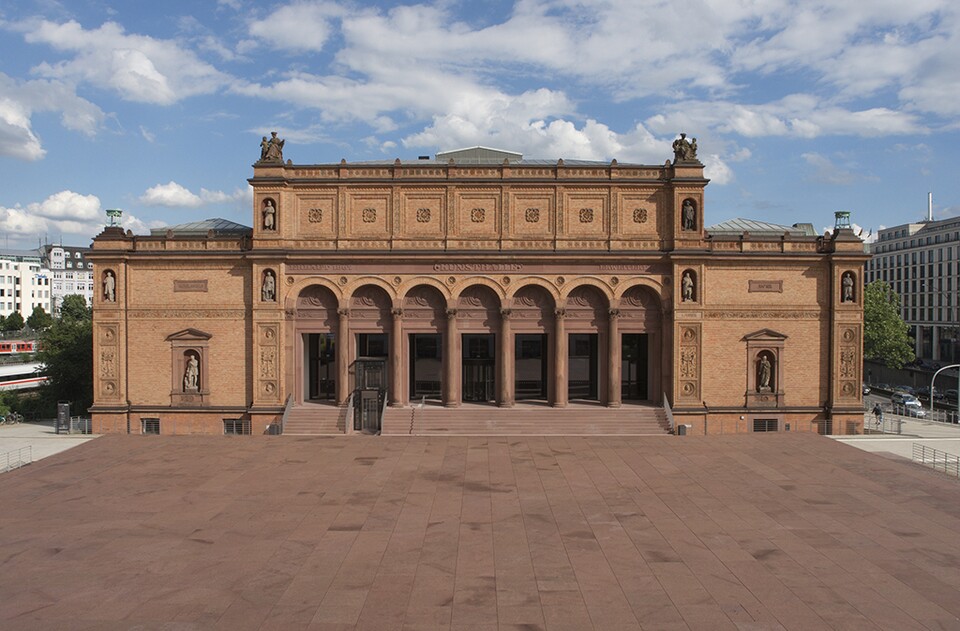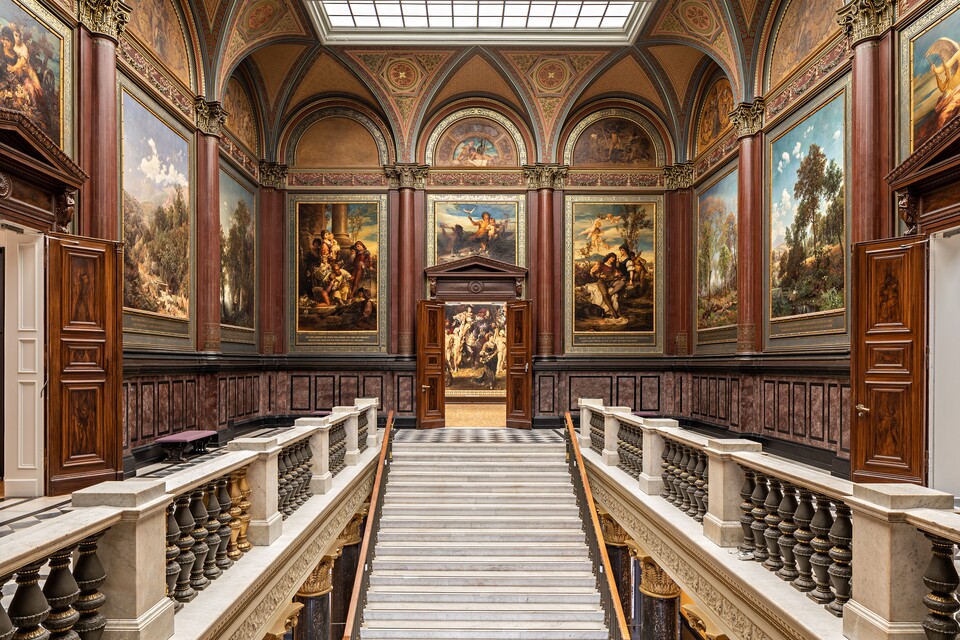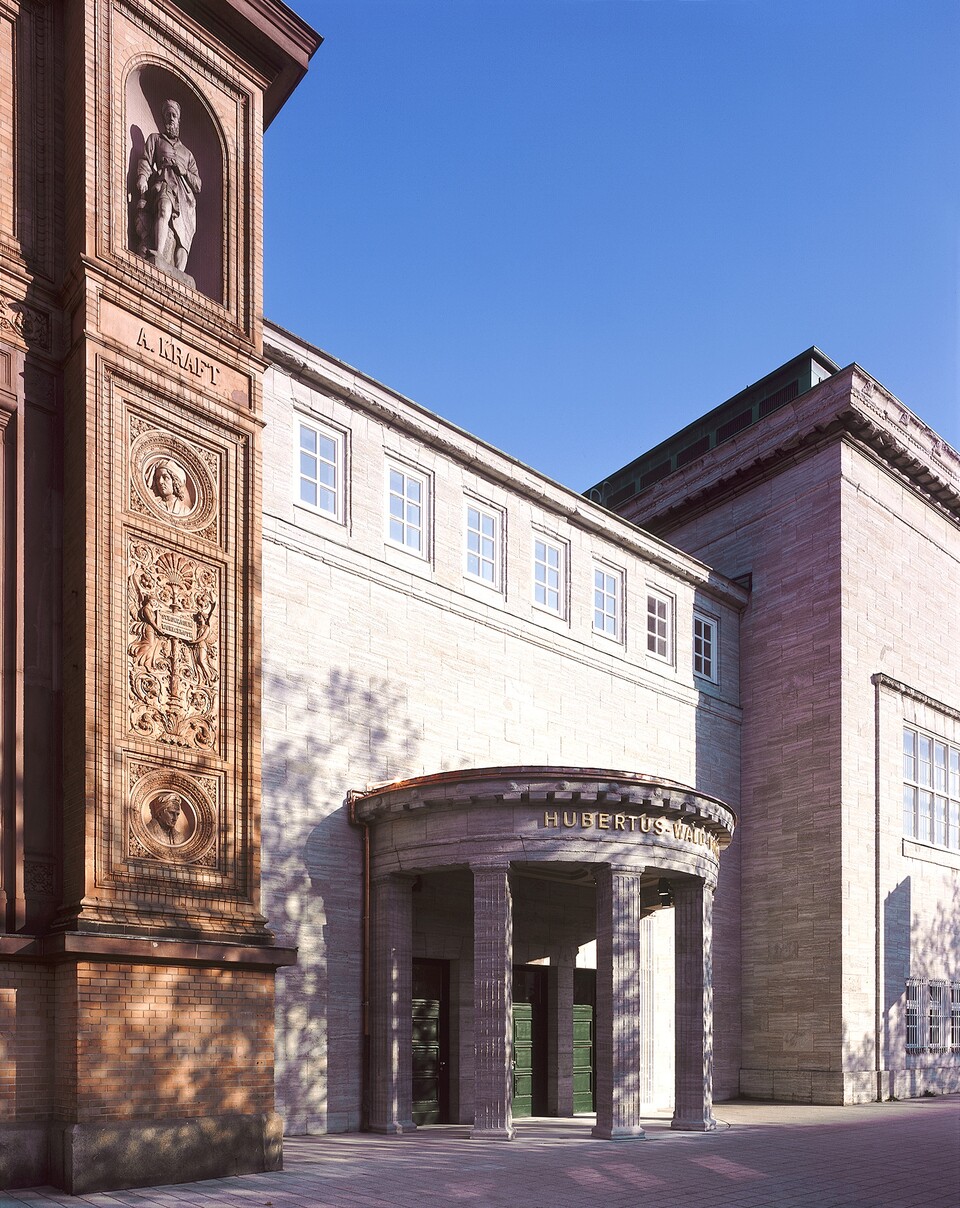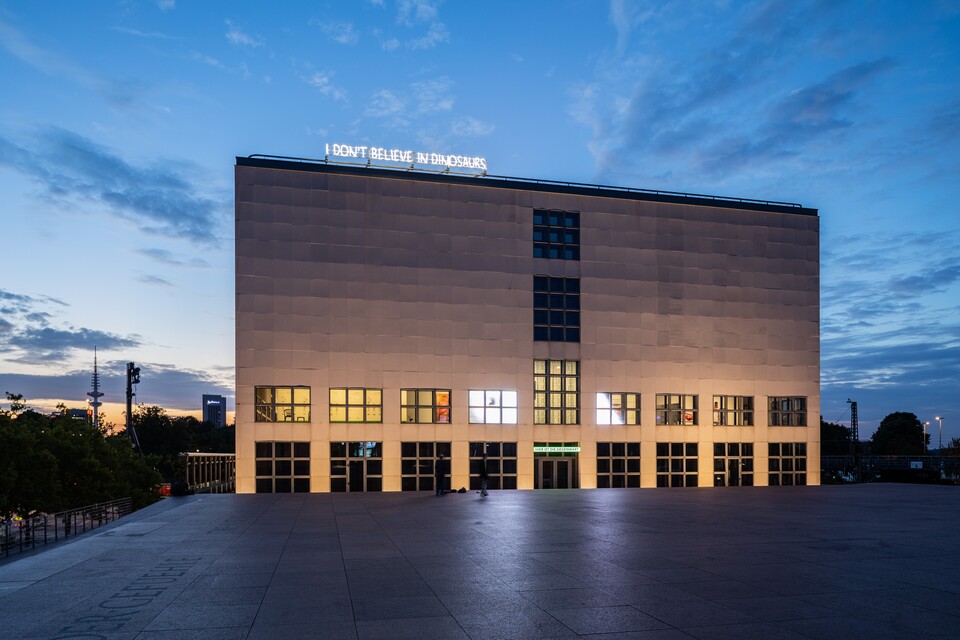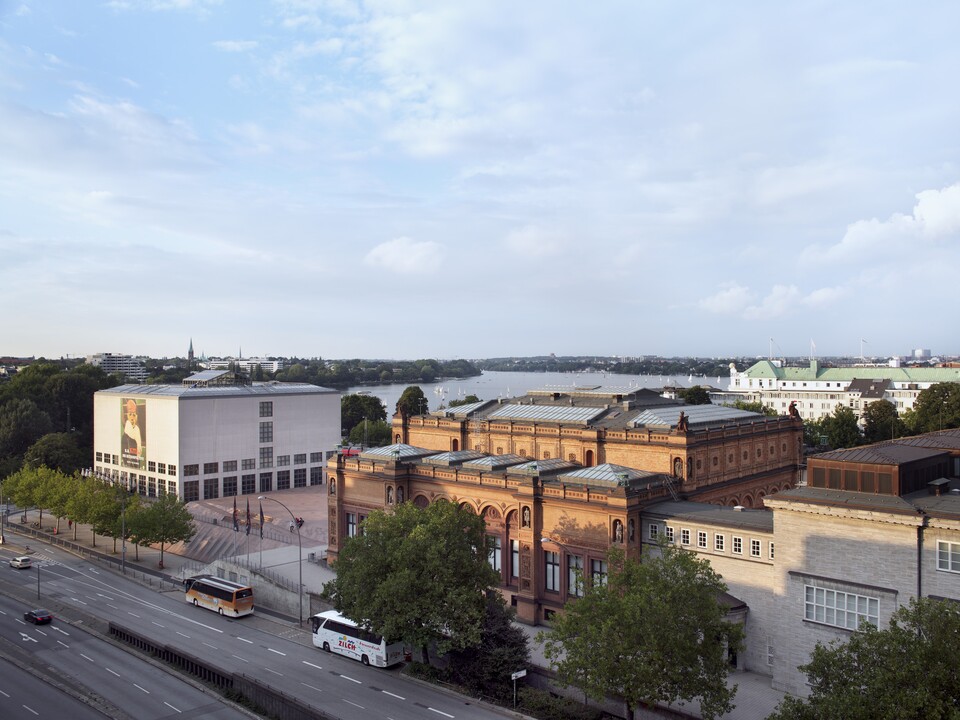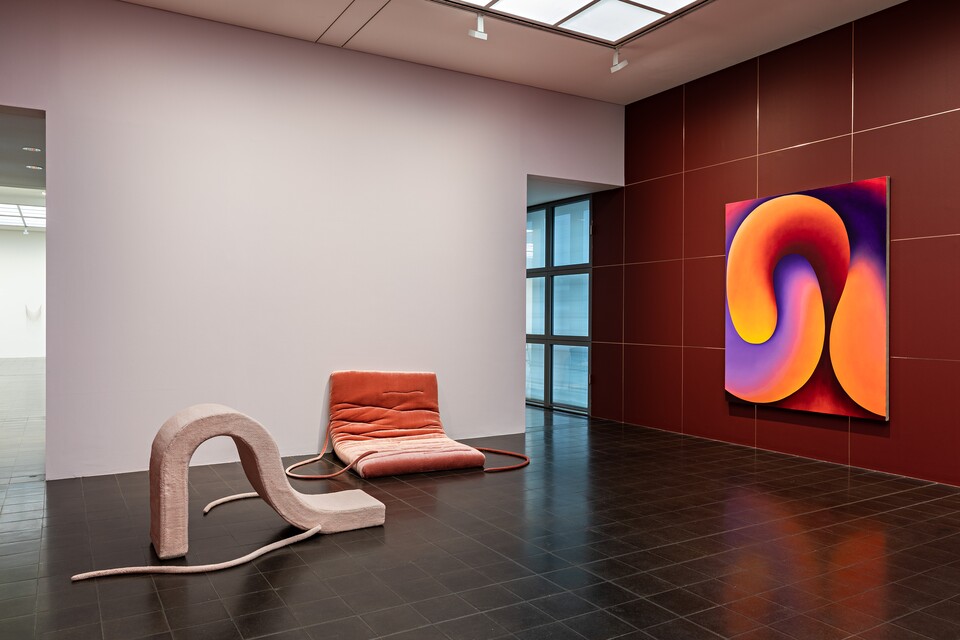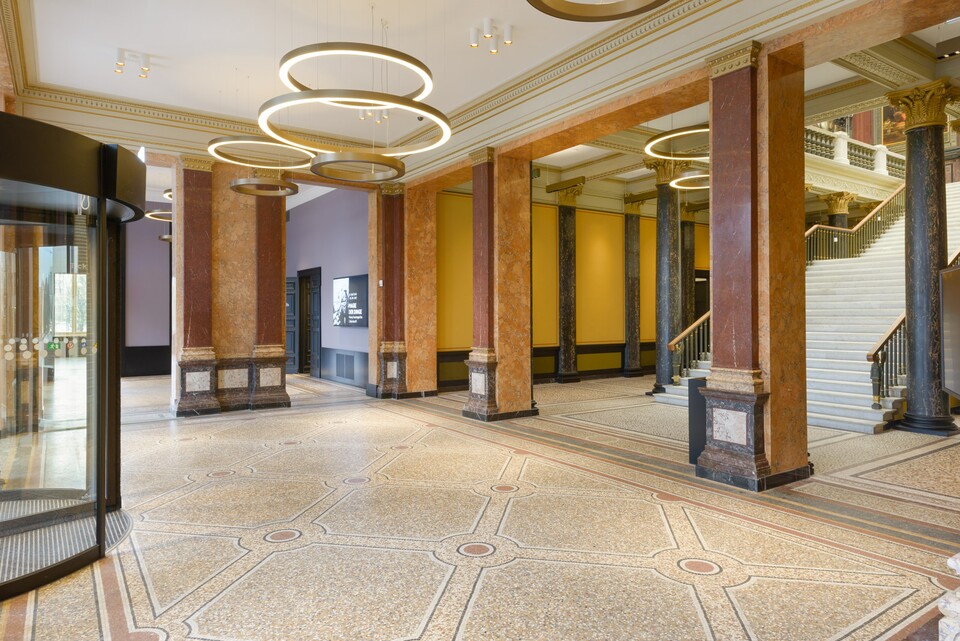About the Kunsthalle
The Hamburger Kunsthalle was founded by citizens of Hamburg. Today it is the largest museum in the Hanseatic city and ranks among the most important art museums in Europe. Initiated by collectors and art enthusiasts, Hamburg’s first museum arose from several private collections and was endowed from the outset by civic donations.
With the founding of the Kunstverein in 1817, the first art institution in the capital in the North funded by Hamburg’s citizens came into being – whose members were working determinedly towards the establishment of an art museum. In 1863, two donations from Georg Ernst Harzen and Johann Matthias Commeter formed the basis of the Kunsthalle’s collection, in connection with the claim that an exhibition space should be built for it. It was mainly donations from citizens that paved the way for Hamburg’s first museum building to be erected on the former Vincent bastion on the Alsterhöhe and opened in August 1869. The second Kunsthalle building was constructed between 1912 and 1919, and the last building section to date, the Gallery of Contemporary Art, opened in February 1997.
The three striking buildings of the Hamburger Kunsthalle, located between the Inner and Outer Alster lakes, house one of the most significant public art collections in Germany today: comprising around 145,000 works of art dating from the 14th century onwards, with around 1,000 works on permanent display. These are complemented by around 6,000 coins, medals and small sculptures, which since 2022 have been recorded, researched and digitised with funding from the Dorit and Alexander Otto Foundation and will be on display in a new collection presentation from 2026. With more than 140,000 works on paper, the Kupferstichkabinett, the Kunsthalle’s department of prints and drawings, is one of the most distinguished in Germany. Its historical study room still serves as the place where works from the collection can be viewed, along with holdings from the art library and the historical archive.
- Read more
The permanent collection of the Hamburger Kunsthalle spans 2,500 years of art history up to the present day. With European salon painting opening the tour through 13,000 square meters of exhibition space featuring major works by Paul Delaroche, Jean Léon Gérôme, Anselm Feuerbach and Hans Makart, visitors are introduced to the leitmotif of the Kunsthalle’s presentations: »All Art Has Been Contemporary«, under which the museum views, researches, exhibits and communicates its diverse fields of collection. It is based on a present-day perspective and encompasses a juxtaposition of our social images and values with those of the past. Making the spirit of a certain era understandable for us today via its art is the Hamburger Kunsthalle’s guiding principle.
The focus of the Old Master Collection is primarily on northern German medieval painting with the altarpieces of Master Bertram and Master Francke, on 16th century German painting with Lucas Cranach the Elder and Hans Holbein the Elder and on 17th century Dutch painting with works by Rembrandt, Pieter de Hooch and Anthonis van Dyck. Particularly outstanding is the 19th century collection with its holdings of German Romanticism, including substantial bodies of work by Caspar David Friedrich, Philipp Otto Runge, Adolph Menzel and Max Liebermann, alongside the collection of French and German Impressionists with singular works by Edouard Manet, Claude Monet, Auguste Renoir and Paul Gauguin. One of the most prominent collections in the German-speaking countries is the Kunsthalle’s collection of Modern Art, with significant works by Edvard Munch, Wilhelm Lehmbruck, Max Beckmann, Paula Modersohn-Becker, Anita Rée and Emil Nolde, in addition to key works of French Modernism, German Expressionism, Der Blaue Reiter, Brücke and Neue Sachlichkeit (New Objectivity).
The most recent extension of the Kunsthalle, the Gallery of Contemporary Artdesigned by Oswald Mathias Ungers, with its 5,600 square metres of floor space is among the largest buildings for contemporary art in Germany. It serves as a venue for a globally oriented exhibition programme offering collection presentations, artist projects and temporary exhibitions. The Hamburger Kunsthalle has been a place for contemporary art since its foundation; artists represented in the excellent collection include great personalities of international art such as Etel Adnan, Sophie Calle, Tracey Emin, Jenny Holzer, Rebecca Horn, Jörg Immendorff, Maria Lassnig, Cady Noland, Albert Oehlen, Sigmar Polke, Gerhard Richter, Thomas Schütte and Rosemarie Trockel. The collection comprises painting, installation, photography, sound and performance art, and ranges from Abstract Expressionism and Art Informel to Nouveau Réalisme, Arte Povera, minimalist art, conceptual art and early video art through to multimedia and digital art.
To this day, the Kunsthalle is strongly supported by the commitment of the citizens of Hamburg. Over 20,000 »Freunde der Kunsthalle« represent the largest friends’ association of a German museum. Another important support association closely linked with the Kunsthalle is the »Stiftung Hamburger Kunstsammlungen«, a foundation that brings together members who finance acquisitions for the Kunsthalle’s collections. Directly affiliated with the museum is the »Förderstiftung Hamburger Kunsthalle« which raises donations for the museum’s various projects.
In addition to sponsoring partnerships with companies and substantial support from large private foundations, such as the Reemtsma-Stiftung, the Ernst von Siemens-Stiftung, the Martha Pulvermacher-Stiftung, the Liebelt-Stiftung and the Hubertus Wald-Stiftung, the Kunsthalle also receives large contributions from private supporters: from 2014 to 2016, for instance, the Kunsthalle was completely renovated and modernised thanks to an extraordinary donation of 15 million euros from the Dorit & Alexander Otto Foundation.
The Kunsthalle’s work is centred on presenting works from the museum collection and special exhibitions developed from it. Eight to nine exhibition openings a year stand for a lively, multiperspective programme addressing a broad, diverse audience of all ages. 26 per cent of our visitors are between 20 and 30 years old; they along with visitors of all ages will find a museum for art ranging from salon painting to conceptual art whose principle »All Art Has Been Contemporary« invites them to look, feel and think with an open mind. The Kunsthalle is committed to a global, diverse and tolerant society and in this regard offers visitors a wide range of perspectives on art and history, from drag tours to audio guide and app.

